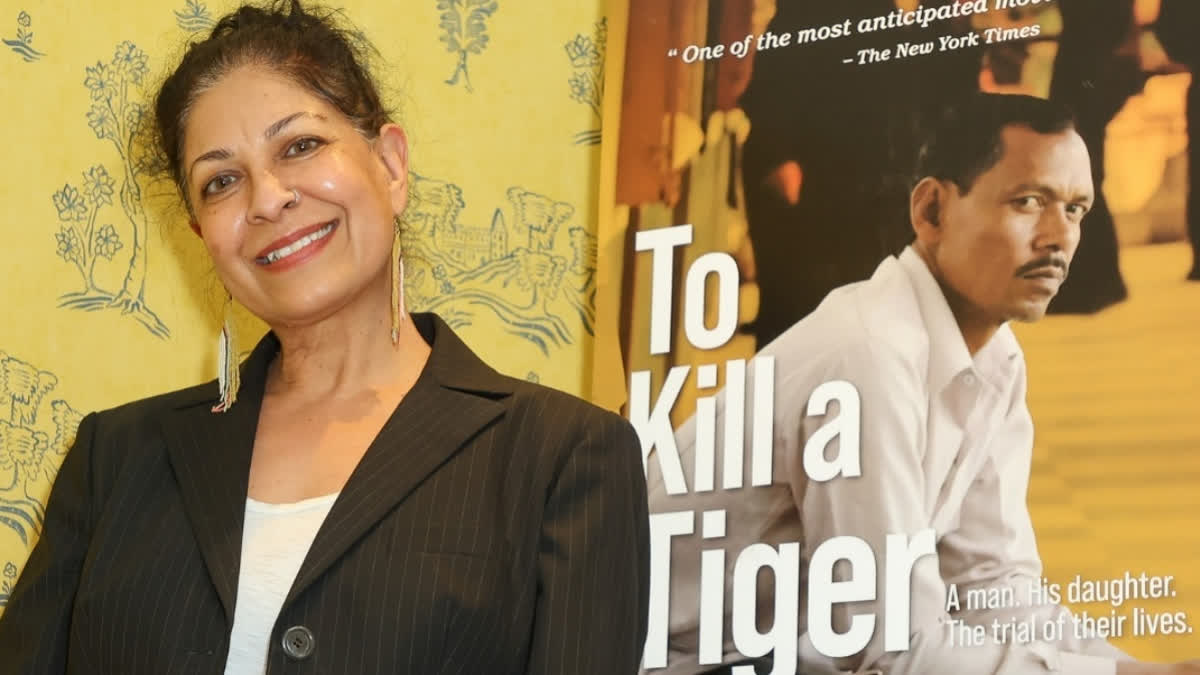Hyderabad: To Kill A Tiger, directed by Indian-born Canadian Nisha Pahuja, has been nominated for an Oscar in the Best Documentary (feature) category. The filmmaker opens up about the difficulties she endured while filming To Kill A Tiger. Pahuja with this docu-feature investigates masculinity, sexual assault, gender norms, and identity politics in the Indian context.
- " class="align-text-top noRightClick twitterSection" data="">
Her film, To Kill A Tiger, depicts the narrative of a father's unflinching determination to secure justice for his 13-year-old daughter, who survived a gang rape in Jharkhand in 2017. The actual stars, according to the filmmaker, are Ranjit, the film's protagonist, and the minor. One of the biggest challenge Pahuja faced as a filmmaker was to first keep her subjects safe from exploitation. "It's something that all documentary filmmakers should be aware of," she says.
Pahuja filmed in India for three and a half years and believes that "gaining the trust of the family was one of the most difficult but rewarding parts of the process." The film took around eight years to be completed. Kiran was a child at the start of the documentary and had survived a gang rape. However, she is now about 20 years old.
The villagers were another hurdle as they felt filming the incidents would bring shame to their community. Initially, they wanted Ranjit to marry his daughter to one of the rapists. Ranjith refuses to the offer, and leads the battle for justice for his teenage daughter. Given the value of community and honour in Ranjit's society, it was difficult and dangerous journey, recalls the filmmaker.
"I didn't set out to make this film. I was really working on a different film, Send Us Your Brother, which takes a larger look at toxic masculinity in India. Ranjit's story was intended to be the film's spine. I spent three and a half years filming in India, following three interrelated narrative threads—those of Ranjit, activist Mahendra Kumar, and two young boys, Karan and Ashish, who are being "reprogrammed" by Mahendra, she said in one of her interviews.
She then talked about how she came down to Ranjit's story. She revealed: "After such a long filming time, one accumulates a large amount of material. And, thankfully — or sadly for us — much of that content was really powerful. After displaying an assembly to colleagues, it became evident that we had two distinct films — and that Ranjit's plot, propelled by a very dramatic narrative, required its own filmic universe."
"Accepting this was sad, but also liberating. It enabled us to do justice to the other characters in the film, especially his wife and his remarkable daughter, "J," who is truly the heart of To Kill a Tiger. Filming J was a tremendous ethical concern for me. I've previously filmed sensitive subjects, but never a child-rape survivor. My first goal was to hide her identify, but everything we attempted (animation, blurring, and giving her a new face, as in Welcome to Chechnya) felt inappropriate and unethical. So much of the film is about the stigma of rape and how horrible it is supposed to be for the victim, so hiding her felt like we were reinforcing the prejudice we were criticising," the filmmaker added.
By the time Pahuja finished To Kill a Tiger, J was 18. Her parents had no objections to her being shown or named in the film, but they, like everyone else involved, believed that the final decision should be hers. After watching the film, J had no problem in being shown, however, the filmmaker has knowingly kept her away from promotions.
The Emmy-nominated director is one of a growing number of Indian documentary filmmakers making a name for themselves on a global scale, as well as a pioneer in the genre. To Kill a Tiger has already won 19 festival accolades, including nominations for TIFF, Palm Springs International Film Festival, Doc Aviv, and Canadian Screen accolades. She also received the 2007 Gemini Award for Best Documentary Series for her film Diamond Road.
Read More



